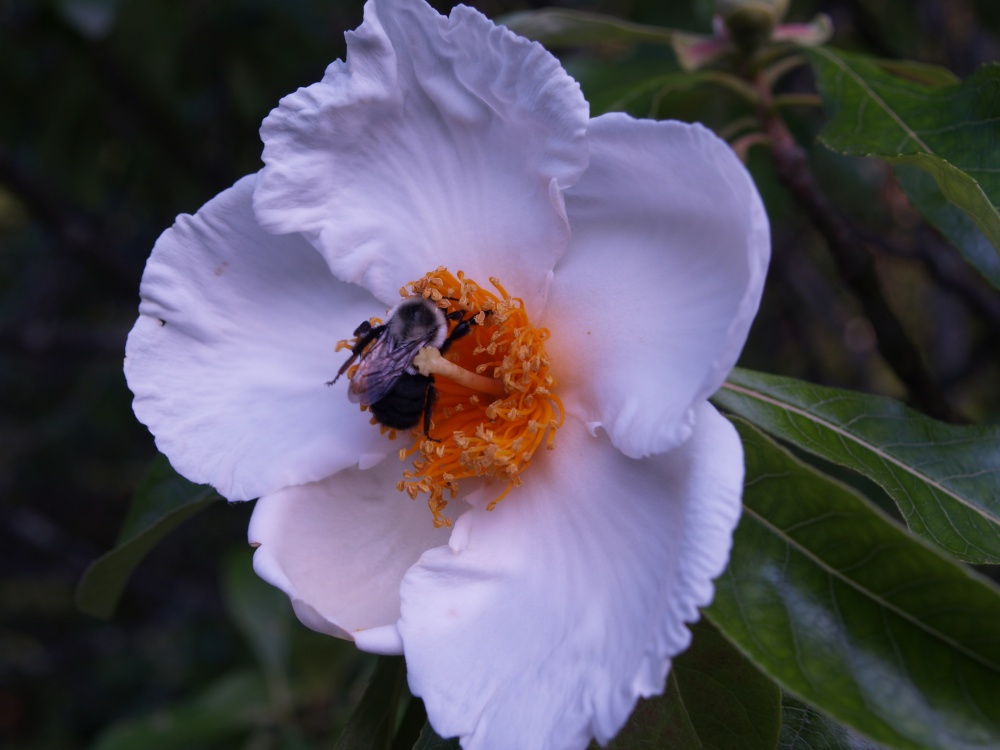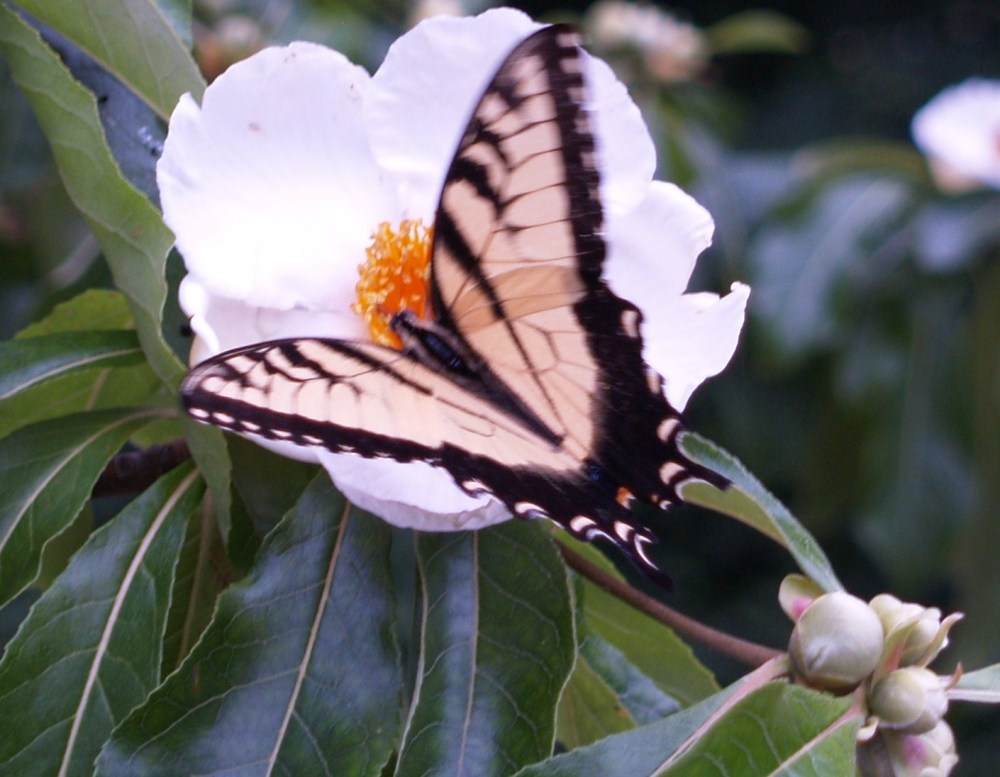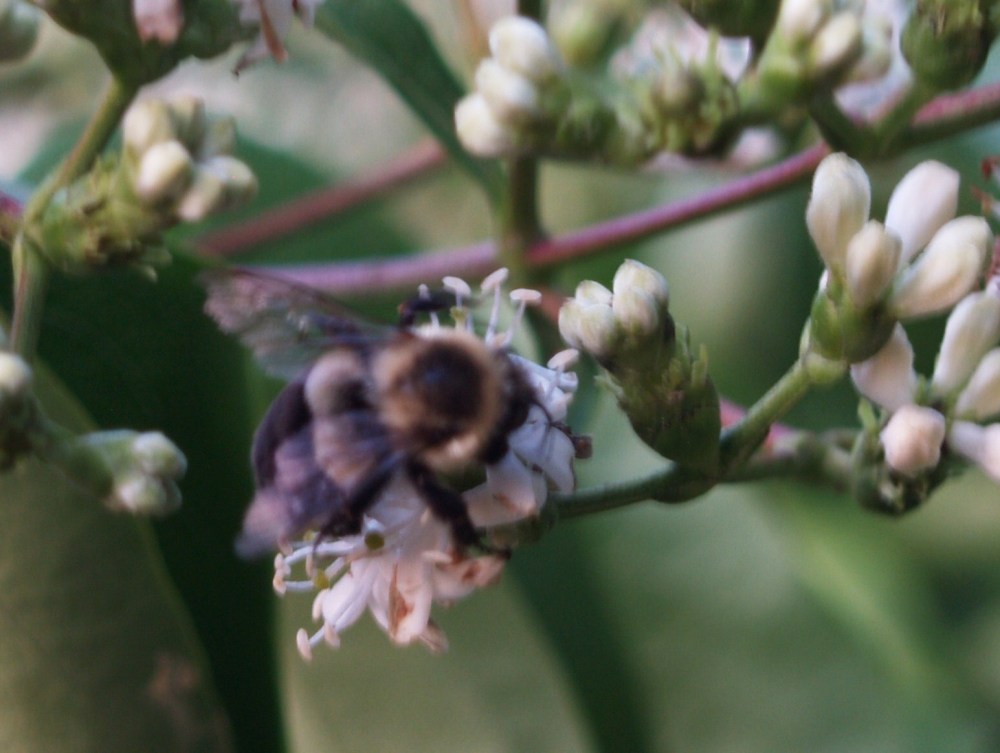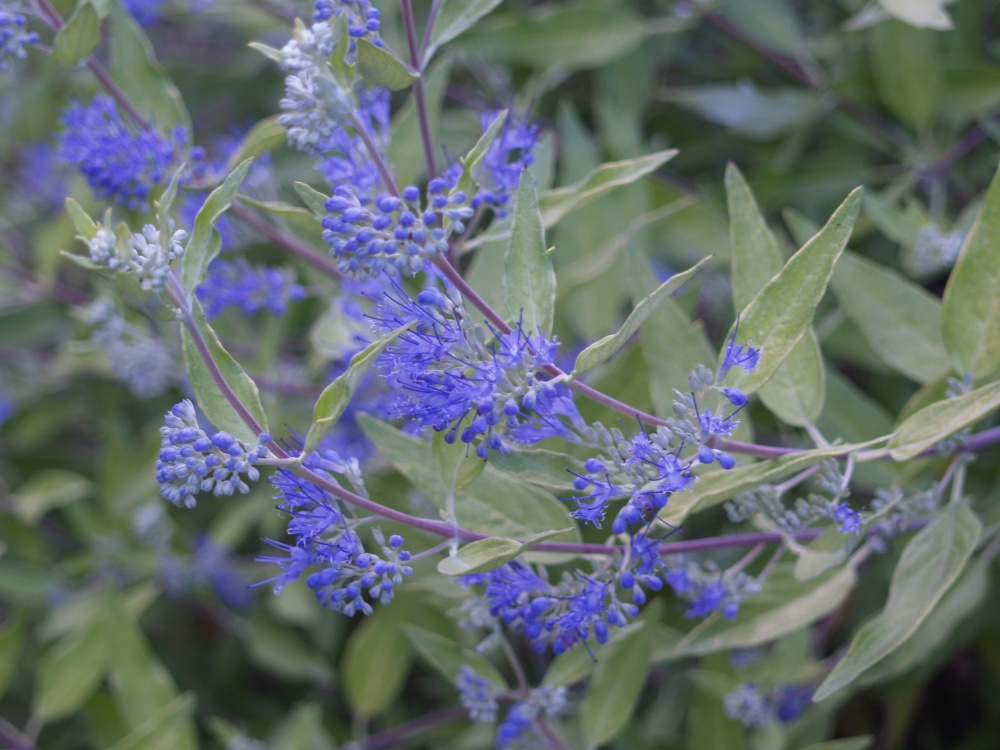Bumblebees are everywhere!
The sad, troubled story of the honeybee has been well documented. Their absence was noted in mid-March when they failed to appear with the blooms of Pieris japonica, and through the year I have spotted a few only occasionally. But there’s no shortage of bumblebees, more than ever in my garden.
A stroll down the stone paths on this late August afternoon finds them foraging tree to tree, flower to flower. Unlike honeybees, there’s no sense of danger from being stung as you pass in close proximity and poke your nose into a fragrant blossom.
On the Franklin Tree (Franklinia alatamaha, above) and Seven Sons Tree (Heptacodium miconioides, below) bumblebees, Swallowtail butterflies, and hummingbirds cross paths, but never share a blossom. They seem unaware of the others’ presence.
 The yellow-leaf caryopteris (the old ‘Worcester Gold’ , above, and improved ‘Jason’) that bumblebees favored in July are nearly past bloom, but the green and white variegated leaf variety ‘Snow Fairy’ is just beginning. The stems of this caryopteris are less woody and tend to die back further over the Winter, but they spring back to full size by mid-July. It is rarely found in garden centers, though I prefer it over the more popular green and yellow leafed versions. The variegation is crisp and striking, even in late Summer when other leaf colors fade.
The yellow-leaf caryopteris (the old ‘Worcester Gold’ , above, and improved ‘Jason’) that bumblebees favored in July are nearly past bloom, but the green and white variegated leaf variety ‘Snow Fairy’ is just beginning. The stems of this caryopteris are less woody and tend to die back further over the Winter, but they spring back to full size by mid-July. It is rarely found in garden centers, though I prefer it over the more popular green and yellow leafed versions. The variegation is crisp and striking, even in late Summer when other leaf colors fade.
Another favored flower, Salvia (above), has passed its peak, and bumblebees have abandoned it for other nectar-filled blooms. Coneflowers (Echinacea, below) are reblooming after deadheading and commonly a favorite of bees and butterflies, but the Franklin and Seven Sons trees are more floriferous, and so the coneflowers are admired by the gardener, ignored by the bumblebees.